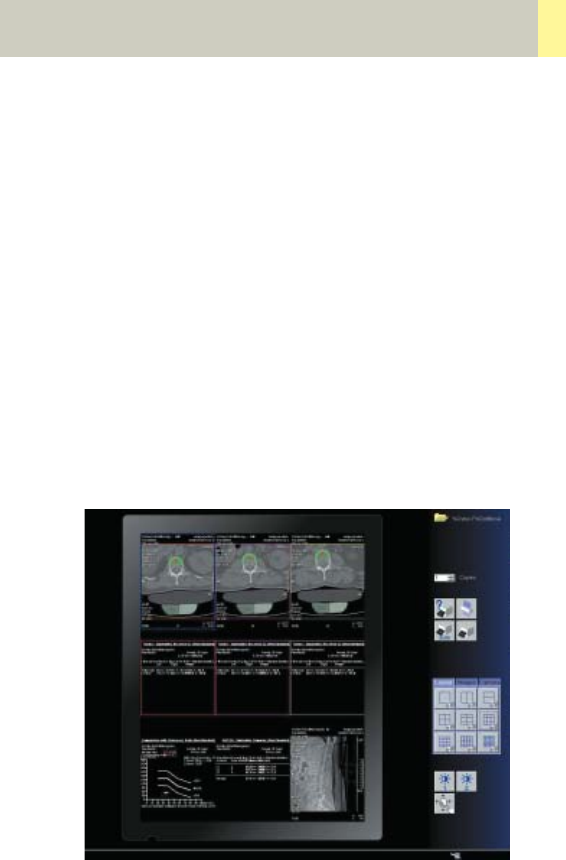Scanner User Manual
Table Of Contents
- User Documentation
- Scan and Reconstruction
- Dose Information
- Workflow Information
- Application Information
- Head
- Neck
- Shoulder
- Thorax
- Abdomen
- Pelvis
- Spine
- Upper Extremities
- Lower Extremities
- Vascular
- Specials
- Children
- Overview
- Hints in General
- HeadRoutine_Baby
- HeadRoutine_Child
- HeadSeq_Baby
- HeadSeq_Child
- InnerEar
- SinusOrbi
- Neck
- ThoraxRoutine_Baby
- ThoraxRoutine_Child
- ThoraxHRSeq_Baby
- ThoraxHRSeq_Child
- Abdomen_Baby
- Abdomen_Child
- Spine_Baby
- Spine_Child
- ExtrHR_Baby
- ExtrHR_Child
- HeadAngio
- HeadAngio08s
- CarotidAngio
- CarotidAngio08s
- BodyAngio
- BodyAngio08s
- NeonateBody
- syngo 3D
- syngo Fly Through
- syngo Dental CT
- syngo Osteo CT
- syngo Volume Evaluation
- syngo Dynamic Evaluation

syngo Osteo CT
287
Additional Important
Information
• Fractured vertebrae are not suited for syngo Osteo
CT evaluation since the more compact nature of
these vertebrae result in bone mineral density value
that is much higher than one would expect.
• When you examine a patient who is older than 80
years, the patient examination data cannot be com-
pared with the reference data base.
• It is recommended to film directly from the Osteo
card. Select images or series with Edit/Select all, and
click “film” icon. You can also configure your film lay-
out, e.g., 3 x 3 as shown in Option/Configuration/
FilmingLayout.
Filming layout
Note: it is not recommended to use filming layout set-
ting of 4 x 5 segments since the image text elements
of the result image are overlapped and hard to read.
C2-025.630.01.01.02_APPLICATIONGUIDE_SPIRIT.book Page 287 Friday, April 8, 2005 9:55 AM










